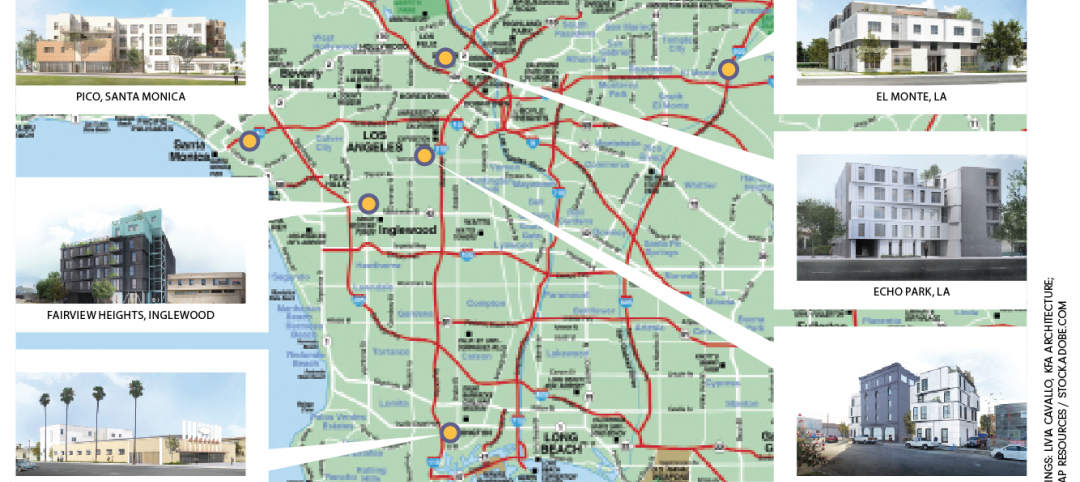Climate change is not a fashionable topic in certain quarters these days, but it cannot be ignored and will only get worse unless those who can do something about it take action.
Since two-fifths of energy use in the U.S. can be attributed to buildings (including multifamily structures), the responsible parties in this case are building owners, facilities managers, property developers, architects, engineers, builders, and contractors. In other words, you and your professional colleagues.
SEE ALSO: Take BD+C’s free Passive House continuing education course, "Building Passively"
PRESUMABLY, YOU’RE ALREADY DOING YOUR BIT
Maybe your firm has signed up for the AIA 2030 Commitment to eliminate carbon emissions in the buildings you design by 2030. Or you’re shooting higher and higher on your LEED for Homes projects. Or you’re certifying your apartment property with GreenPoint, or with the NAHB National Green Building Program. All commendable, but not enough. In general, those efforts will only yield an average energy savings of 20-25% over “conventional” construction, i.e., meeting minimum building energy code requirements. To make a real dent in reducing greenhouse gas emissions, we need to be in the 50-75% range of energy savings for new construction.
MAY I SUGGEST A FRESH APPROACH?
If you haven’t looked seriously at “passive house” design and construction, you should. OK, I know. You’ve already got an image in your mind of a bearded guy in lederhosen holding a stein of beer, standing in front of a cute little cottage in the Bavarian Alps.
Passive house design and construction is anything but that; in fact, it started right here in the good ol’ USA. Passive house uses systems and building products you use every day. It employs techniques that are familiar to the construction trades. Most important, it relies on solid building science: Orient the building correctly to the sun. Seal it tight to halt air leaks that sap energy. Insulate the walls and roof to a “super” level. Use high-performance windows and doors.
Eliminate thermal bridges. Do these things right and you can save 80-90% on heat energy, 50% on cooling energy, for an average 50-70% total energy savings. That’s what you can get when you build “passively.”
PASSIVE HOUSE HAS SPECIAL APPLICATION TO MULTIFAMILY PROJECTS.
In addition to the energy savings (which are hardly trivial), apartment and condominium buildings built to passive house standards use quiet, low-volume air circulation systems that filter indoor air and enhance occupant comfort. That’s a nice payoff for doing the right thing.
To learn more about passive house (and gain 1.0 AIA HSW Learning Units or Professional Development Hours), go to BDCnetwork.com/building-passively-aia-course.
I hope “passive house” will be the start of a whole new professional adventure for you.
Related Stories
Multifamily Housing | Aug 23, 2020
Designing affordable housing on odd urban lots in LA
"Misfit parcels" could be the key to providing more affordable housing in Los Angeles, say two experienced multifamily housing designers.
Multifamily Housing | Aug 16, 2020
TCA Architects specifies Engineered Floors products for 304-unit apartment complex in Tracy, Calif.
TCA Architects specified Lewis Rigid Stone Polymer floating plank and Lewis Gold 100% Solution-Dyed high-performance fiber carpet for Harvest in Tracy, Calif.
Multifamily Housing | Aug 3, 2020
71-unit 100% affordable housing development breaks ground in Mountain View, Calif.
Van Meter Williams Pollack is designing the project.
Multifamily Housing | Aug 2, 2020
Stantec-designed 17 West mixed-use development completed in Miami Beach
Stantec-designed 17 West mixed-use development completed, with first Trader Joe's in Miami Beach.
Multifamily Housing | Jul 31, 2020
Railings manufacturer VistaPro launches its new website
VistaPro Architectural Railing Solutions launches new website.
Multifamily Housing | Jul 29, 2020
Multifamily construction proposal activity sees modest rebound in Q2 2020
Among the firms that work in the multifamily sector, 31% said that proposal activity increased in the second quarter, while 24% said it decreased.
Multifamily Housing | Jul 29, 2020
San Francisco’s Millennium Tower fix approved, moving forward
Simpson Gumpertz & Heger will be the engineer-of-record for the fix.
Multifamily Housing | Jul 27, 2020
Putting 'home' at the heart of affordable housing
Home is a powerful thing. It’s the place that forms you, a guiding set of relationships, memories, and experiences that, for better or worse, make you who you are.
Multifamily Housing | Jul 20, 2020
Abandoned 15-story high-rise becomes mixed-use luxury apartment building
Kimmich Smith Architecture designed the project.
















